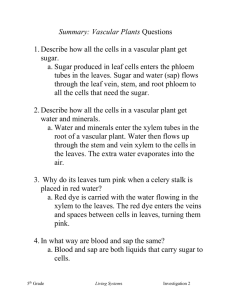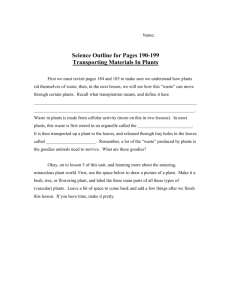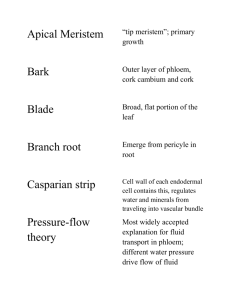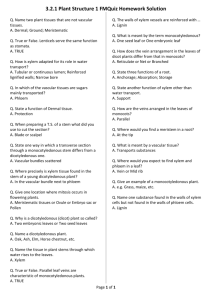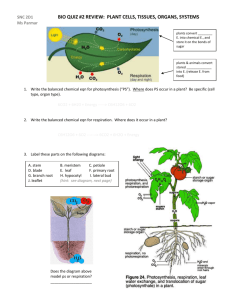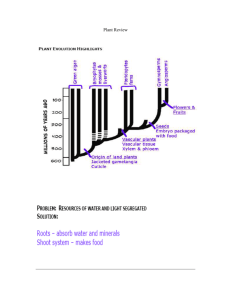Plants1 - Faculty
advertisement
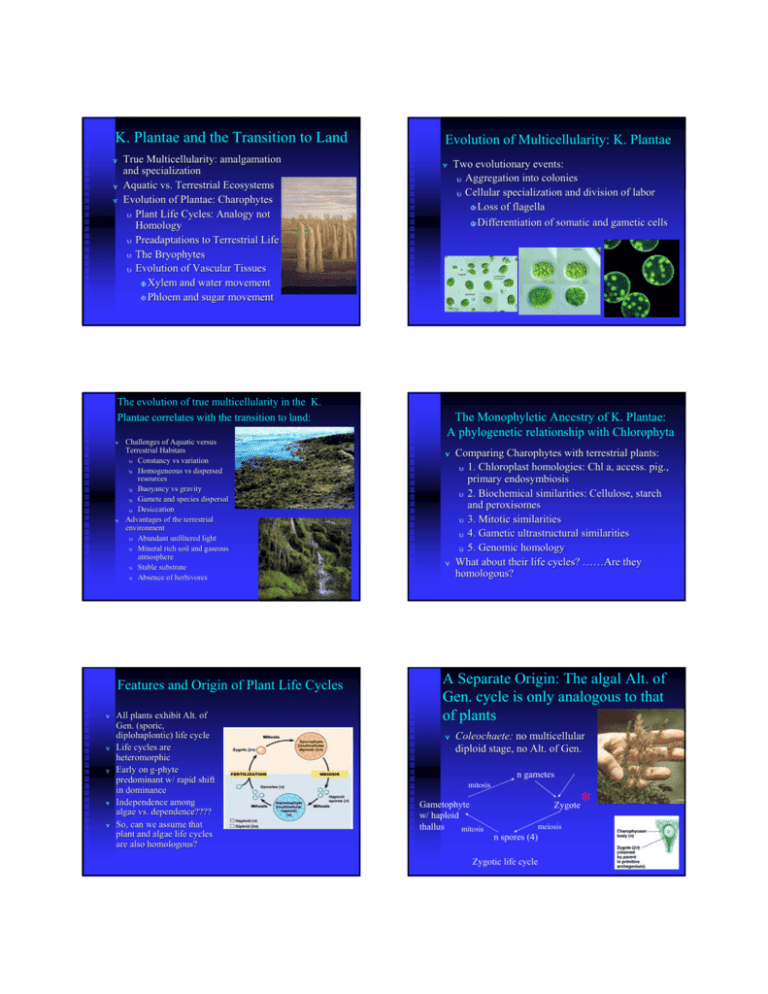
K. Plantae and the Transition to Land ν ν ν True Multicellularity: amalgamation and specialization Aquatic vs. Terrestrial Ecosystems Evolution of Plantae: Charophytes υ Plant Life Cycles: Analogy not Homology υ Preadaptations to Terrestrial Life υ The Bryophytes υ Evolution of Vascular Tissues Φ Xylem and water movement Φ Phloem and sugar movement The evolution of true multicellularity in the K. Plantae correlates with the transition to land: ν ν Challenges of Aquatic versus Terrestrial Habitats υ Constancy vs variation υ Homogeneous vs dispersed resources υ Buoyancy vs gravity υ Gamete and species dispersal υ Desiccation Advantages of the terrestrial environment υ Abundant unfiltered light υ Mineral rich soil and gaseous atmosphere υ Stable substrate υ Absence of herbivores Features and Origin of Plant Life Cycles ν ν ν ν ν All plants exhibit Alt. of Gen. (sporic, diplohaplontic) life cycle Life cycles are heteromorphic Early on gg-phyte predominant w/ rapid shift in dominance Independence among algae vs. dependence???? So, can we assume that plant and algae life cycles are also homologous? Evolution of Multicellularity: K. Plantae ν Two evolutionary events: υ Aggregation into colonies υ Cellular specialization and division of labor Φ Loss of flagella Φ Differentiation of somatic and gametic cells The Monophyletic Ancestry of K. Plantae: A phylogenetic relationship with Chlorophyta ν ν Comparing Charophytes with terrestrial plants: υ 1. Chloroplast homologies: Chl a, access. pig., primary endosymbiosis υ 2. Biochemical similarities: Cellulose, starch and peroxisomes υ 3. Mitotic similarities υ 4. Gametic ultrastructural similarities υ 5. Genomic homology What about their life cycles? ……Are ……Are they homologous? A Separate Origin: The algal Alt. of Gen. cycle is only analogous to that of plants ν Coleochaete: no multicellular diploid stage, no Alt. of Gen. n gametes mitosis Gametophyte w/ haploid thallus mitosis Zygote meiosis n spores (4) Zygotic life cycle * What if…: zygote Gametophyte w/ haploid thallus n spores ν ν ν ν mitosis mitosis ν An Unintentional Transition (Preadaptation) to Land: a new adaptive zone n gametes mitosis meiosis Multicellular 2n Ancestral charophyte delayed zygotic meiosis Mitosis yields dependent multicellular sporophyte Protected embryophyte Adaptive advantage to alga: maximizes spore production υ Also preadaptive! ν A. Preadaptations to Terrestrial Life υ Waxy Cuticle and sporopollenin υ Gametangia: protection for gametes υ Protected Embryophyte B. The Bryophytes: Mosses, Liverworts, Hornworts υ Waxy cuticle υ Gametangia υ Still semisemi-aquatic Φ Flag. sperm Φ No vasc. tiss. υ Dependent sporo. Some highlights of plant evolution The life cycle of Polytrichum, a surviving moss Note shift in dominance Vascular Tissue: Tracheophytes embody an evolutionary breakthrough! ν A. Regional Specialization of Plant Body υ υ ν ν Roots, stems and leaves: a response to dispersed resources Protoderm -->dermal; -->dermal; Ground meristem --> --> parenchyma of root and leaf; Procambium --> --> conducting tissues (X&P) B. Structural Support: lignin C. Vascular System: υ υ Xylem: dead tubetube-like cells for the conduction of water and minerals mined from the soil Phloem: living cells that enable the cytoplasmic transfer of sugars and other metabolites The three tissue systems: Dermal, Ground and Vascular Tissues ν ν ν ν Apical meristematic tissue υ Pluripotent cells υ Stem and root Protoderm: covering υ Epidermis and guard cells Ground meristem: functional & support υ Parenchyma, collenchyma, sclerenchyma Procambium: vascular & support υ Xylem, phloem, and lateral meristem Xylem: water-conducting cells ν ν ν Water potential drives the movement of water in the xylem Tracheids and vessel elements Lignified cell walls Mechanisms of water movement υ Root pressure (positive) υ TranspirationTranspirationcohesioncohesion-tension mechanism Φ Water potential (negative) Phloem: Foodconducting cells ν ν ν Distribution of the products of PS is “source to sink” sink” Sieve cells or sievesieve-tube members and companion cells Pressure Flow Mechanism of Translocation υ υ υ υ Create hydrostatic pressure at the source Sap flows away from source Solute removal at sink lowers the pressure Water recirculates w/ xylem Tapping phloem sap with the help of aphids Pressure flow drives the movement of phloem sap in a sieve tubes



